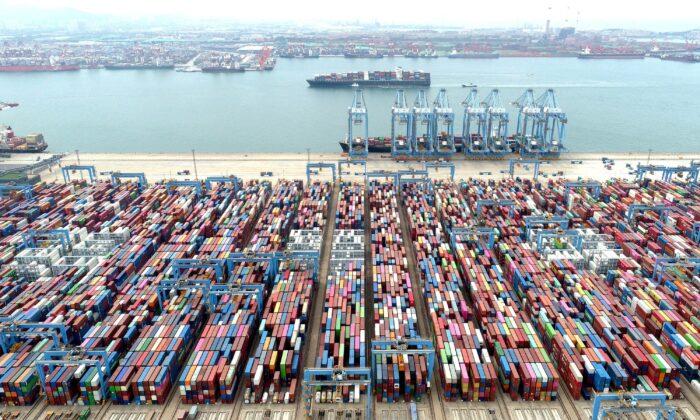BEIJING—China’s imports contracted sharply in April, while exports rose at a slower pace, reinforcing signs of feeble domestic demand despite the lifting of COVID-19 curbs and heaping pressure on an economy already struggling in the face of cooling global growth.
China’s economy grew faster than expected in the first quarter thanks to robust services consumption, but factory output has lagged and the latest trade numbers point to a long road to regaining the pre-pandemic momentum at home.
Inbound shipments to China fell 7.9 percent year on year in April, extending the 1.4 percent decline seen a month earlier, while exports grew 8.5 percent, easing from the 14.8 percent surge in March, customs data showed on Tuesday.
Economists in a Reuters poll had predicted no growth in imports and an 8.0 percent increase in exports.
“At the beginning of this year, one would assume that imports will easily surpass 2022 levels following the reopening, but that hasn’t been the case,” said Xu Tianchen, an economist at the Economist Intelligence Unit.
Officials have repeatedly warned of a “severe” and “complicated” external environment in the wake of mounting recession risks for many of China’s key trading partners.
The sharp deterioration in last month’s trade flows will only renew worries about the state of external demand and risks posed to the domestic economy, especially given the frail recovery from a year earlier when inbound and outbound shipments were severely disrupted by China’s COVID-19 restrictions.
Import Stress
The downturn in imports suggests the world economy won’t be able to count much on China’s domestic engine of growth, and as the nation re-exports some of its imports, it also reinforces the extent of weakness in some of its major trading partner economies.A 15.3 percent drop in the import of semiconductors indicate the scale of the demand-pullback in the re-export market for such parts.
Analysts say the sharp global monetary policy tightening campaign of the past 12–18 months and recent Western banking stress remain concerns for revival prospects of both China and worldwide.
Shipments growth to ASEAN—a block of Southeast Asian countries—slowed to 4.5 percent in April from 35.4 percent last month. The region is China’s largest export partner.
Other recent data also showed South Korean exports to China, a leading indicator of China’s imports, were down 26.5 percent in April, continuing 10 consecutive months of decline.
China’s coal imports fell in April from a 15-month high in the prior month, snapping back as demand weakens in the country. Imports of copper—a proxy for global growth—and natural gas were also down in the same period.
The recent official manufacturing purchasing managers’ index for April showed new export orders contracting sharply.
China’s first quarter GDP data last month, while offering some relief, also raised doubts about the demand outlook due to property market weakness, slowing prices, and surging bank savings.





